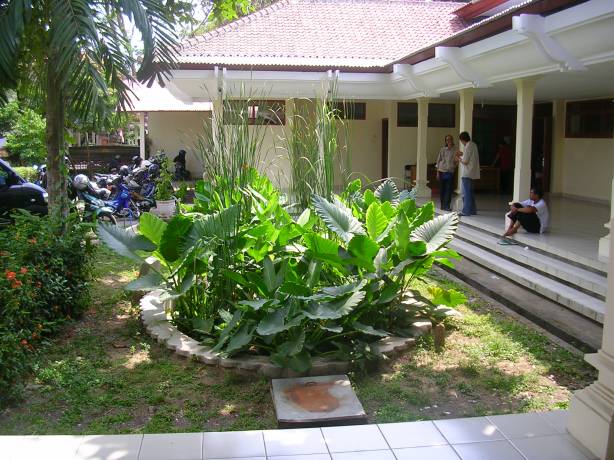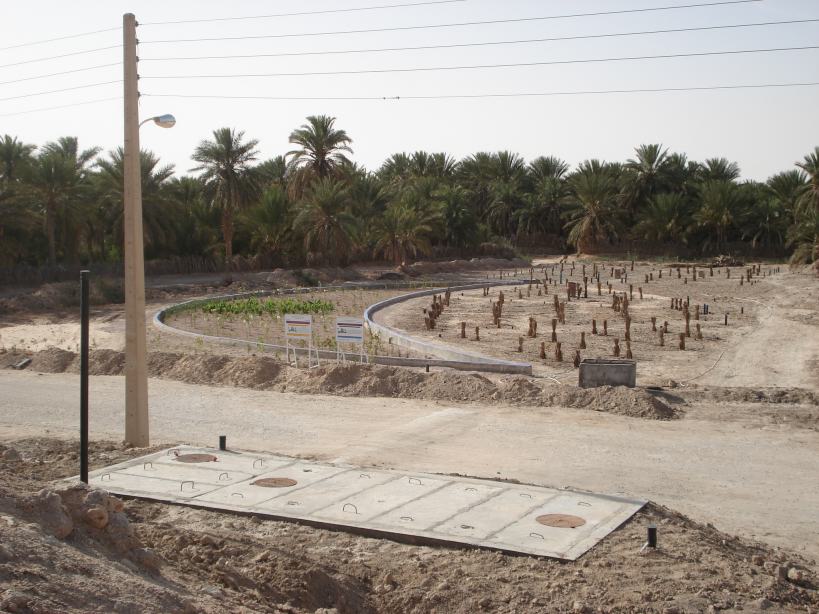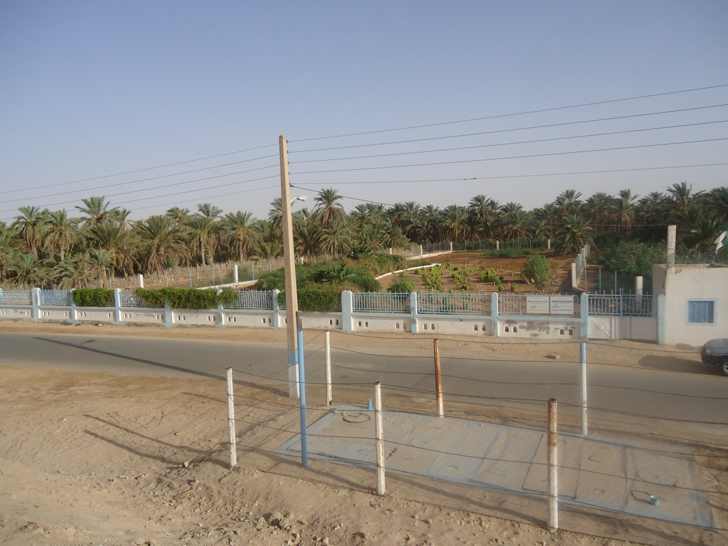|
 |
Photos and applicability in...
Communities
Constructed wetlands can also be applied
to larger populations, such as office clusters, communities of homes or village/town scale projects.
There are numerous examples in the United States for example of subsurface
flow wetlands treating wastewater of populations of up to 20,000 people,
involving millions of liters or gallons of wastewater daily (in France the city of Honfleur treats all its wastewater through constructed wetlands). In these
cases, the wetlands can
be scaled in size for a single-treatment area, or through a series of decentralized, regional systems, close to the points of origin of the wastewater,
to minimize the cost and extent of pumping and piping and to take maximal
advantage of gravity flow.
Example:
Municipal offices of the environmental agency BAPELDADA (Regional Environmental Impact Management Agency), Denpasar, Bali, Indonesia
40 persons

Example:
Old Ksar of Temacine, Touggourt, Algeria
100 persons
In 2007, a pilot WWG plant was installed to begin sewage treatment of a group of houses and a mosque of Temacine's Old Ksar, a historic site that was for many centuries a stop on the road to Mecca for North-West African habitants and which is currently under renovation by UNESCO. This project was conducted at the initiative of Shams Association in association with the Zaouia Tidjania and the Ministry of Water Resources. The government and the authorities of numerous wilayas were so pleased with the quality of treatment and the appearance of the plant that this family of treatment is in the process of being extended to all provinces.

At plantation, in the shape of a crescent moon, with a view of the septic tank as primary treatment, June 2007

In 2011
Example:
Emu Creek (Gulgagulganeng) near Kununurra,
West Australia
and Joy Springs community near Fitzroy Crossing,
West Australia
In 2002, 3 WWG units
were installed to solve the health and environmental problems caused
by wastewater at the Emu Creek aboriginal community in Kununurra, Western
Australia of fifty people and in 2004, and 5 WWG units
were installed to solve sewage problems at houses at the Joy Springs
community, Fitzroy Crossing, West Australia.
Problems that had to be solved & Solutions provided:
Houses at both communities were situated on low ground, subject to soil
inundation during the rainy season; as a consequence, normal leachdrain
disposal after septic tanks failed and sewage water was present on the
surface of the ground, causing ill-health, odor, and environmental degradation
by the fouling of groundwater and surface water. Furthermore, the community
being smaller and the houses being scattered, it made pumping to a centralized
sewage treatment plant uneconomic.
In addition to servicing technical and economical needs (cost saving
compared to a centralized sewage treatment plant was considerable),
both communities have been greened and beautified using the treated
wastewater. Since the community has been instructed on how their constructed weltands function, the people have
now a better understanding of the consequences of water usage in the
community.
Water quality tests have demonstrated the high degree of water treatment
already being achieved in the first two years after installation (e.g.
around 90% reduction in BOD (organic compounds), suspended solids and
60-80% reductions in nutrients).
Stakeholder Participation: Another
benefit of this community-based Wastewater treatment was the involvement
of the communities themselves, as it was the residents of Emu Creek
(Gulgagulganeng) and Joy Springs who, upon consultation, chose the approach:
- Members of the community advised on which plants would be used in the WWG, requesting beautiful flowering plants.
- Community members were employed during the construction and trained in the ongoing maintenance and operation of the new systems.
- Workshops were held on the subject of water conservation.
- Painters from the Emu Creek community designed and painted their Dreamtime Stories on the control boxes of the systems, affirming their ownership of the new garden treatment systems.
- At four of the Joy Springs house systems, water is pumped to a raised soil area (inverted leachdrain) during periods of highwater during the wet season. These areas were also planted to flowering shrubs, native plants and fruit trees, further greening the community,
Example
Emu Creek (Gulgagulganeng)
50 people,
3 WWG units
Joy Springs Aboriginal Community
5 houses fitted with WWG treatment Units four with inverted leachdrains for wet season operation and further greening of community


One of the Wastewater Gardens at Joy Springs (left) after 1 year planting, 2005..
At right, an inverted leachdrain prior to planting to enable operation of wastewater
systems even when community has flooding during wet season.
Example:
Mangrove Action Project community center in Tiwoho, North Sulawesi,
Indonesia
A first WASTEWATER GARDEN® in North Sulawesi, using mangrove species, was designed and constructed in 2003. This WASTEWATER GARDEN® system serves as an educational tool by demonstrating the diversity and usefulness of Indonesian mangroves, amongst the most biodiverse mangrove ecosystems in the world. The system replicates mangrove zonation from coastal to back mangrove ecology. In addition, it will showcase mangroves used locally for traditional medicines, fibre, food and fuelwood. Our strategy for the Mangrove Action Project sites around the world is to use a wide variety of mangrove species (true mangroves and mangrove associates), ranging from shallow-rooted back mangrove species to deep-rooted trees found throughout all major mangrove zones. The use of a wide range of plants - and subsequently a diversity of root systems - helps to oxygenate the subsurface environment and thereby to support microbial life which enhances the performance of the WWG system. The use of a wide range of species also mitigates impact on system performance should disease or insects affect one species. The ability of WWG to support the life of a wide range of wetland species is illustrated by its capacity to showcase the importance and richness of North Sulawesi mangroves.



Initial planting of mangrove species in July 2004 at Tiwoho, north Sulawesi.
Growth of the mangroves species in December 2004.
The Wastewater Garden serves a community centre for bamboo utilization
implemented by the Mangrove Action Project.
|

